It is no secret that the drop swirl in one of my favorite soapmaking design techniques! It is just soooo simple and the results are always stunning. Here are some of my favorite drop swirls from the blog.
- Pink and Purple Drop Swirl Soap Design
- Flower Bomb Drop Swirl with Video
- Apple Cider Drop Swirl Soap
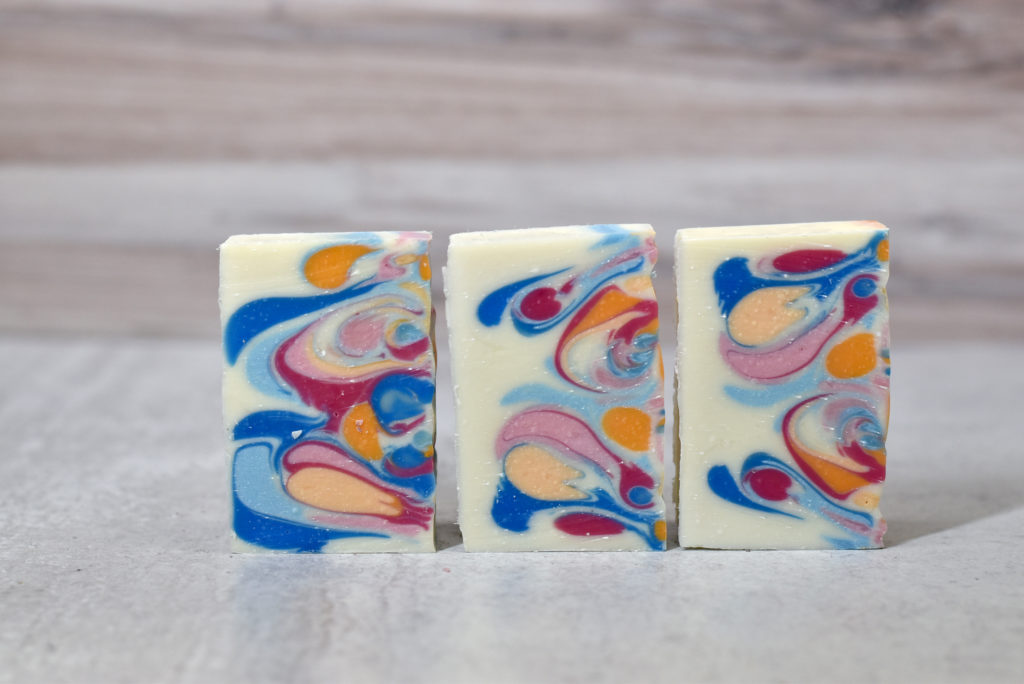
In this tutorial, I’m going to show you how to make this cute drop swirl soap design! I used three colors (blue, pink and orange) and then created tints by adding white! I love the resulting color scheme! Creating tints and shades is a great way to easily expand your color choices.
(Disclosure: Some of the links below are affiliate links, meaning, at no additional cost to you, I will earn a commission if you click through and make a purchase.)
Drop Swirl Cold Process Soap Recipe
Basic Body Bar – More Moisture from Lovin Soap Studio Recipe eBook (Grab your copy for 50 cold process soap recipes + 64 essential oils blends!)
Base Oils
- Coconut Oil (76 degree) – 270 grams (30%)
- Shea Butter – 90 grams (10%)
- Olive Oil – 342 grams (38%)
- Avocado Oil – 72 grams (8%)
- Rice Bran Oil – 126 grams (14%)
Lye Solution
- Sodium Hydroxide – 126 grams (5% superfat)
- Apple Cider – 252 grams (1:2, lye:water ratio)
Scent
Use your favorite slow-moving fragrance or essential oil blend. I simply used a blend of lavender and peppermint essential oils. If you’re looking for a good place to get essential oils, I HIGHLY recommend Appalachian Valley Natural Products. I love their products and their shipping is super fast!
- Lavender Essential Oil – 20 grams
- Peppermint Essential Oil – 5 grams
Color
- Mani-Pedi Mica (Muddy Micas)
- Bleu Mica (Muddy Micas)
- Racing Stripe Orange Mica (Bramble Berry)
- White Mica
I used a 10″ Silicone Loaf Mold from Nurture!
Let’s make soap! If you are new to soapmaking, be sure to download our free guide, How to Make Cold Process Soap! Gear up in your gloves and your safety glasses.
Step 1: Create a lye solution. Weigh the water and lye into two separate containers. Slowly pour the sodium hydroxide into the water while stirring. Stir until completely dissolved and set aside to cool.
Step 2: Prepare the base oils. First, weigh any solid oils and butters into a container and melt. You can melt using the microwave or low heat on a burner. Next, weigh each liquid oil into the melted oils. The liquid oils will cool down the melted oils and leave you with a base oil mixture that is about at the correct temperature to make soap. It might still need to cool down a bit.
Step 3: Weigh your essential oil or fragrance oil into a glass or stainless steel container and add to your base oil.
Step 4: Prepare your mold. If you need to line your mold, line it.
Step 5: Check the temperatures. You should now have a container containing liquid base oils and a container containing lye solution. Take the temperatures using an infra-red temperature gun. Be sure to stir each mixture before taking the temp. You want your temperatures to be between 80-110° F.
Step 6: Once you have reached desired temperatures, pour the lye solution into the oil mixture and mix to emulsion.
Step 7: Divide the soap into containers to color. I left some base in my main container, and divided soap into six containers for swirling.
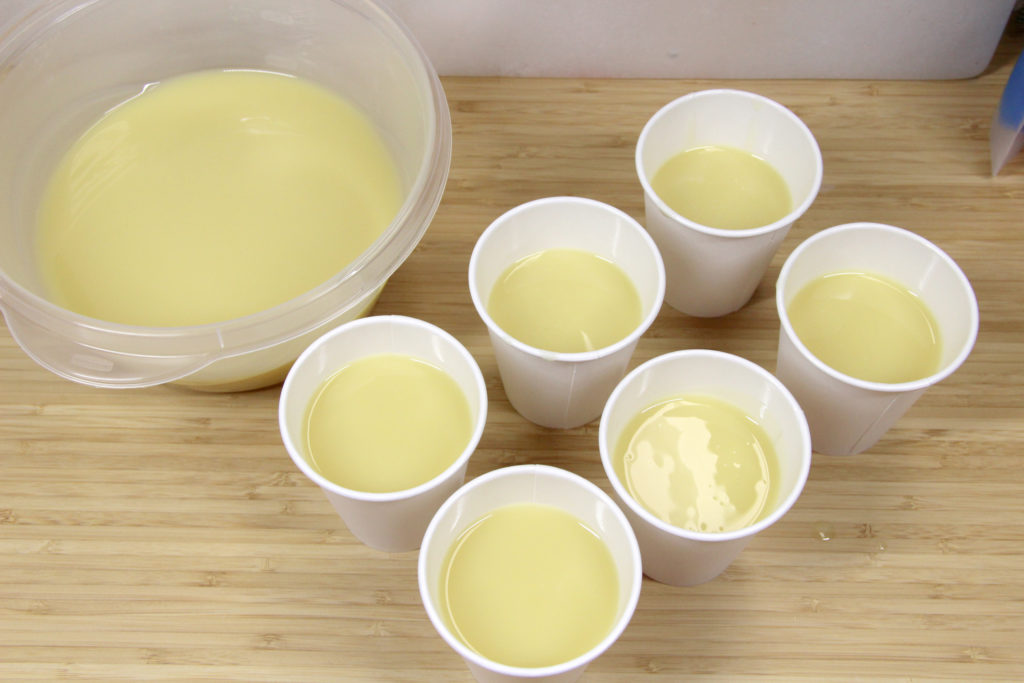
Step 8: Add colorants to each cup and mix well using a mini-mixer. I used Really Red Pigment from Nurture. I added white mica to one cup. Red + white to another cup. And red to the last cup.
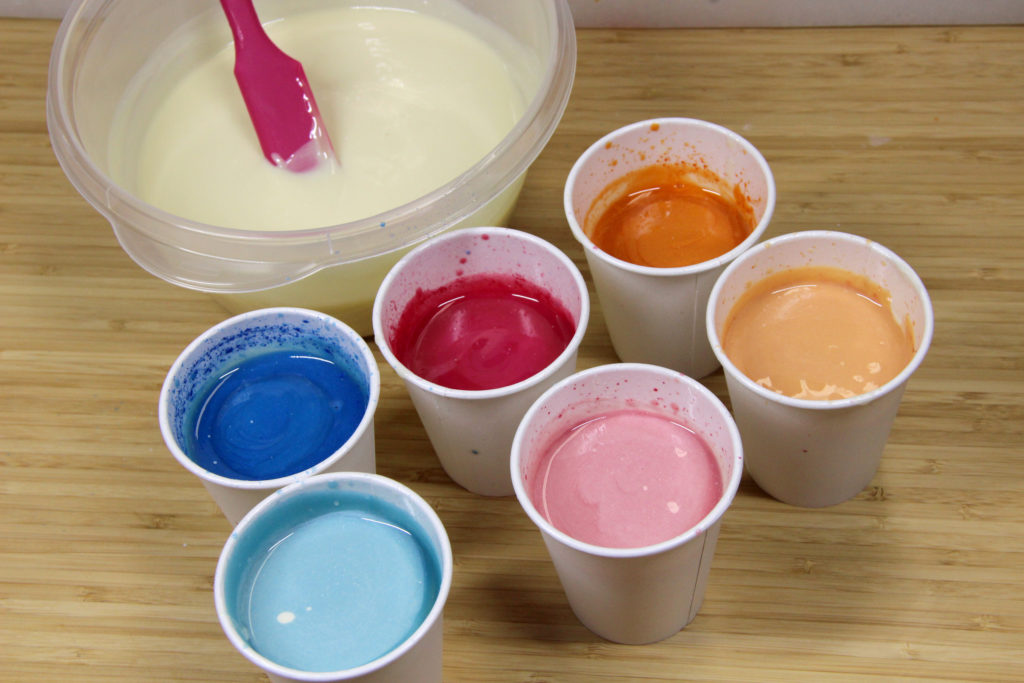
Step 9: Pour the base into your mold.
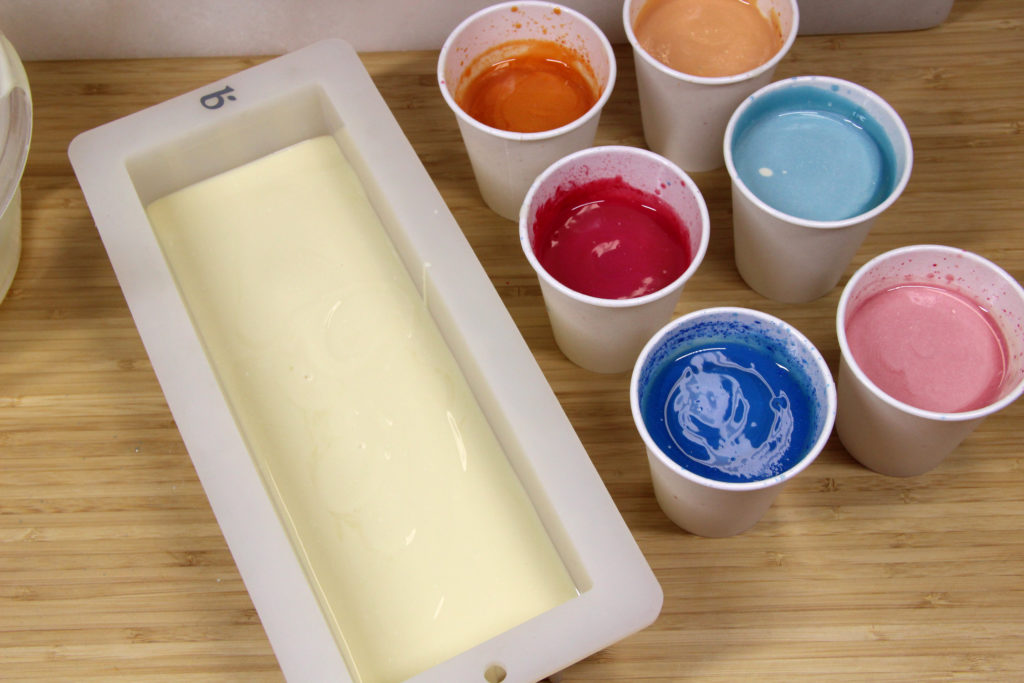
Step 10: Pour each color into your base as you move the cup up and down your mold. Hold your pouring cup up high to make the soap dive down into your base. Hold your pouring cup down low so that the soap will land closer to the top of your base.
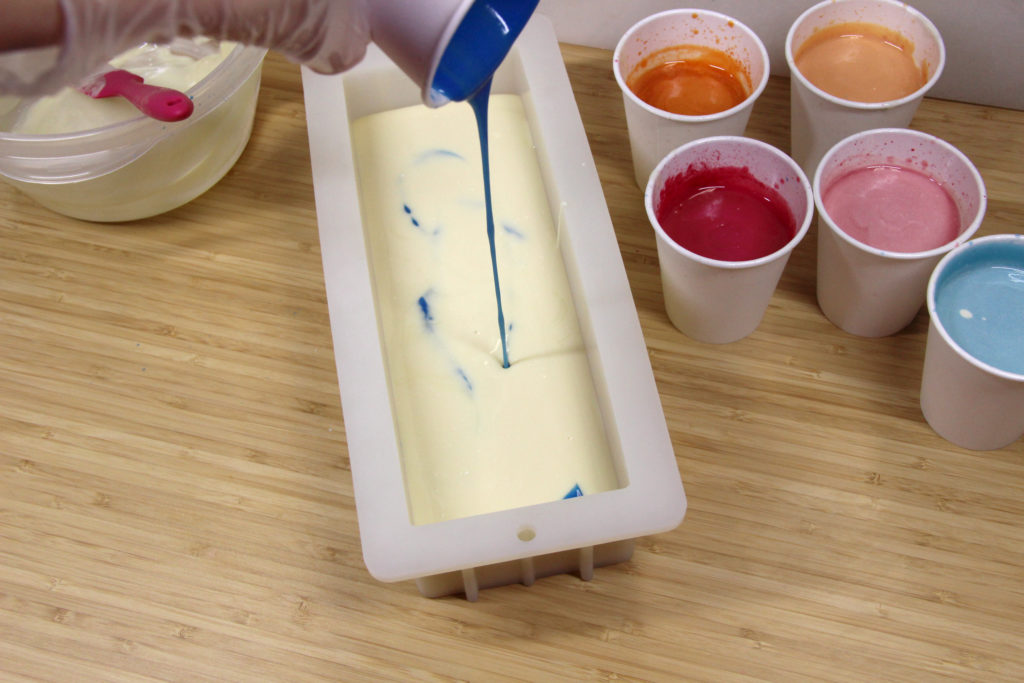
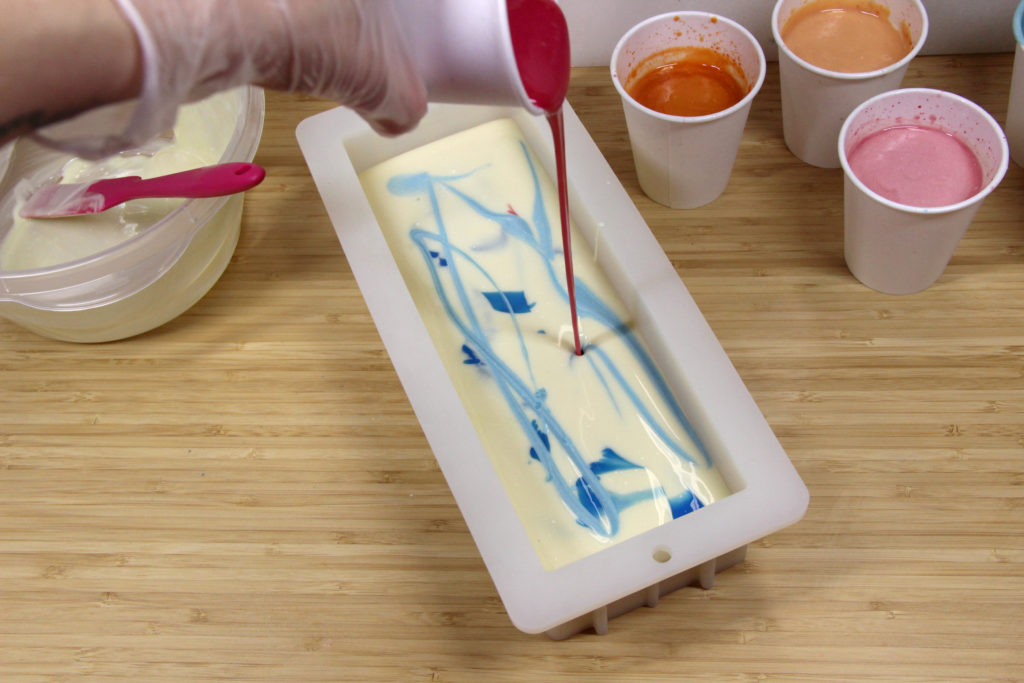
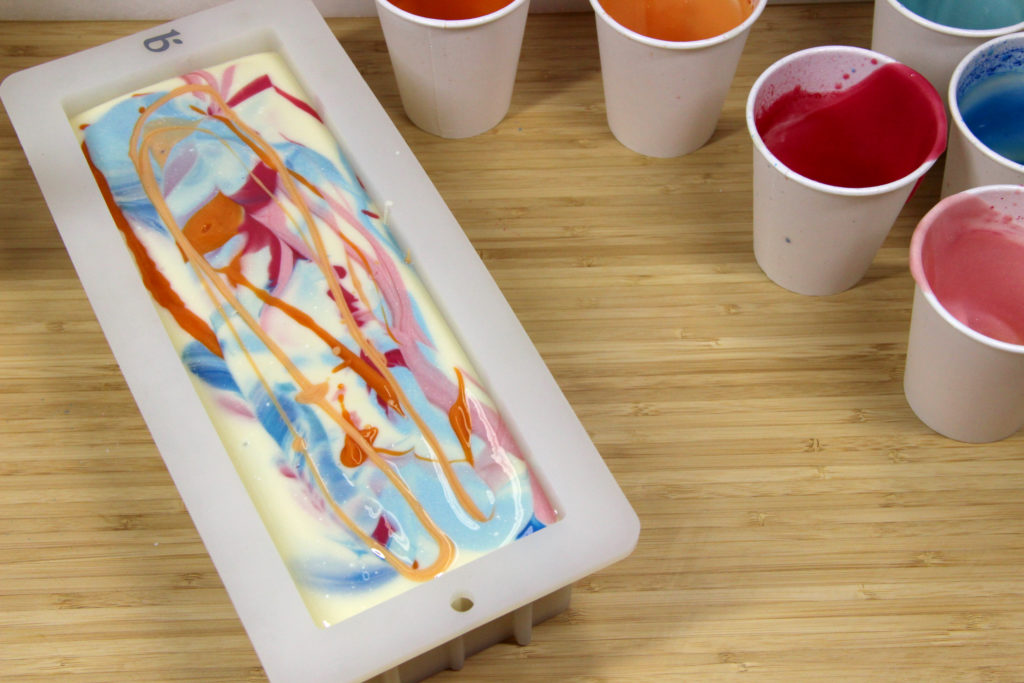
Step 11: Swirl the top of your soap if you want!
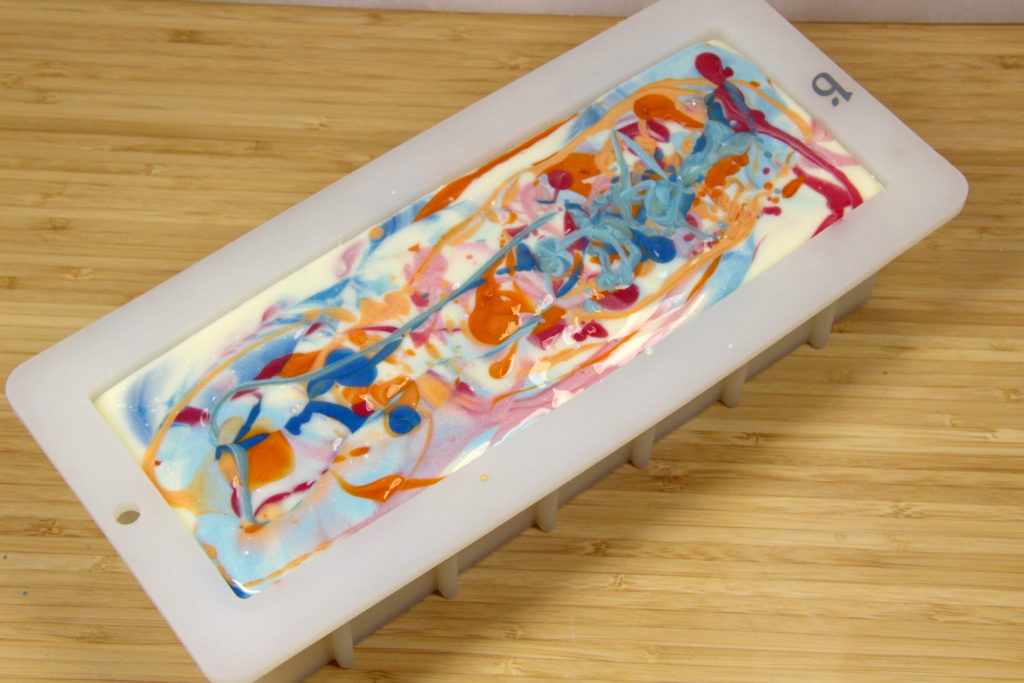
Step 12: Allow your soap to sit for about 30 minutes and the spray with alcohol to combat ash. Spray again in an hour.
Step 13: Let your soap harden and saponify for at least 24 hours.
Step 14: Unmold and cut into slices!
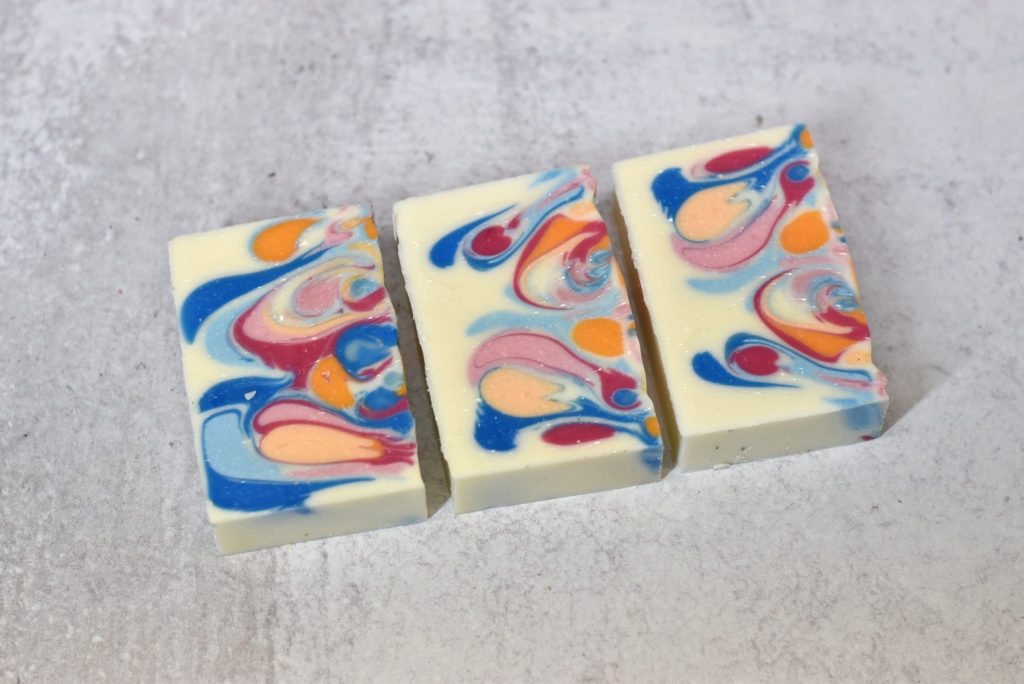
Step 15: Cure your soap for 4-6 weeks.
Please share on Pinterest! Thank you!

Grab our new eCourse, Swirling Success!
Learn to control trace, so it doesn’t control you!
This detailed video training explores the difference between emulsion and trace, so you know when to stop mixing your soap, allowing enough time to color and execute intricate designs. You’ll leave the eClass with a greater understanding of how water/liquid, temperatures, base oils, fragrance oils, essential oils and additives all affect the movement of your soap to trace.
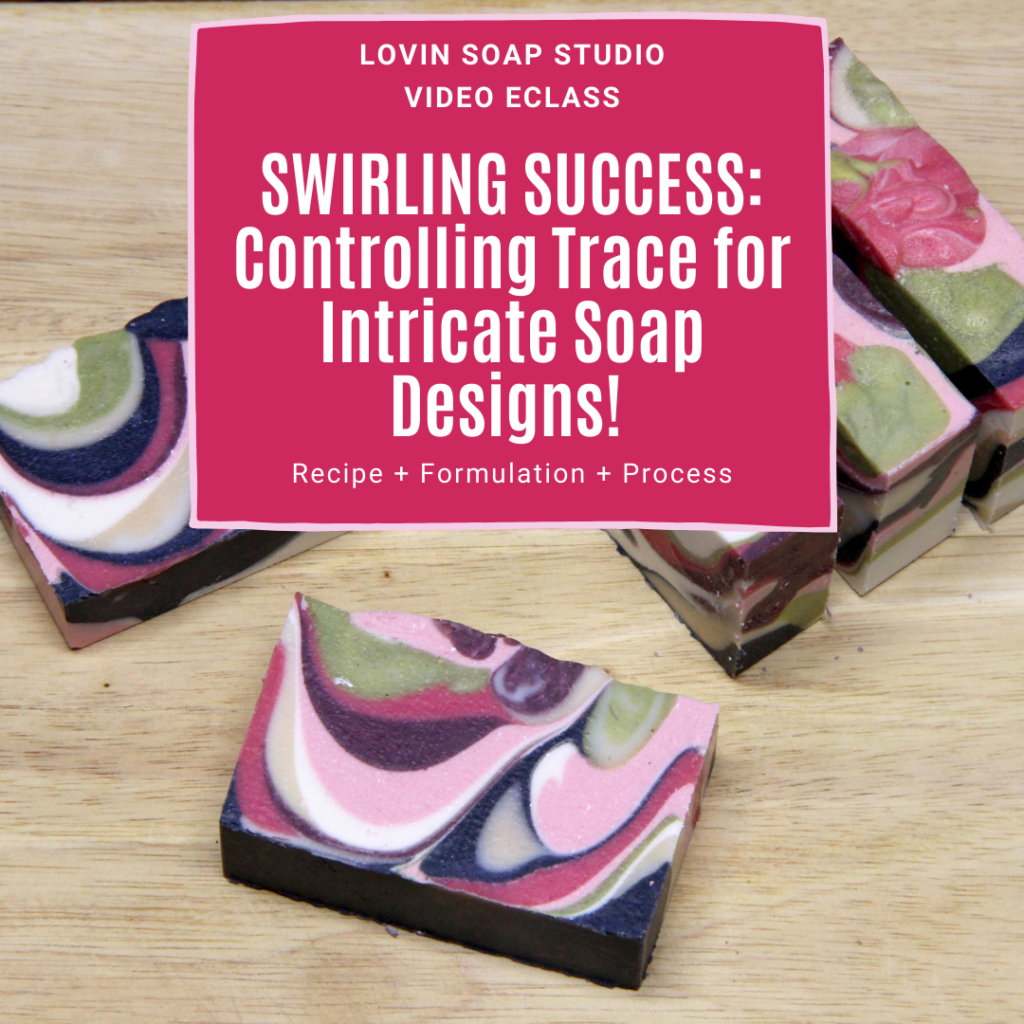

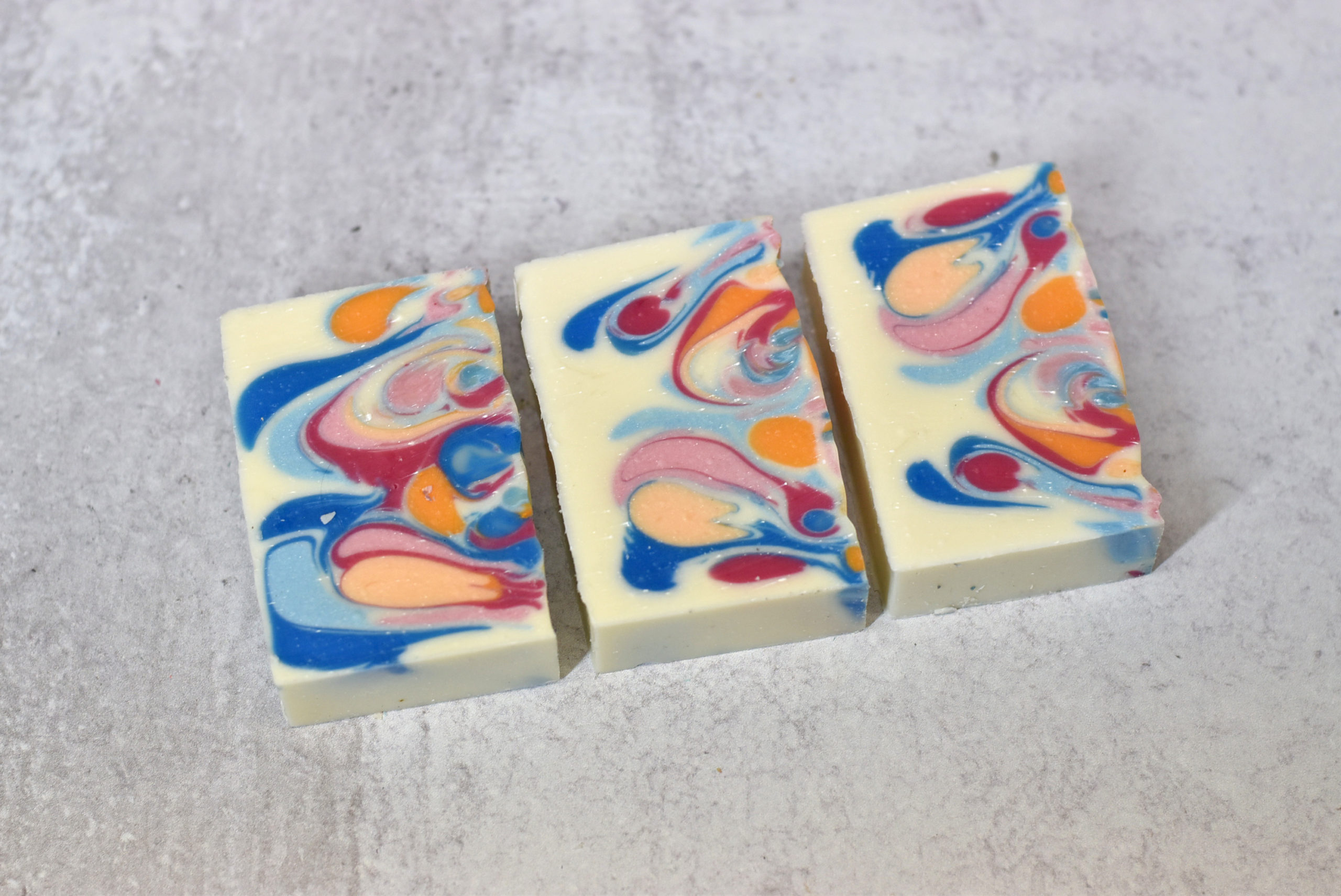
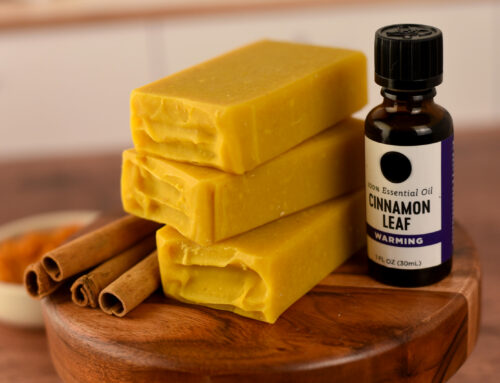
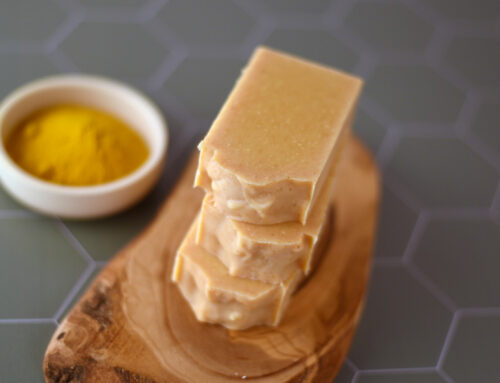
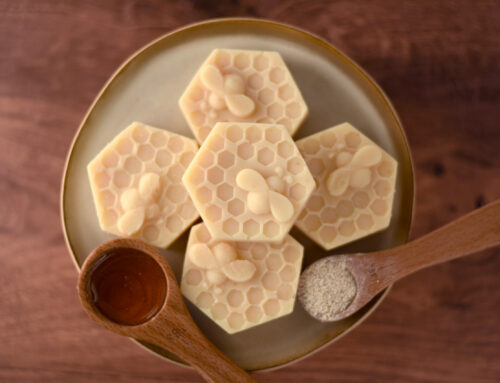
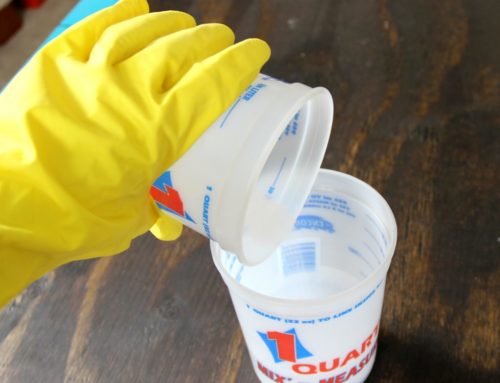

Why the apple cider?
Thank you so much for the noledge